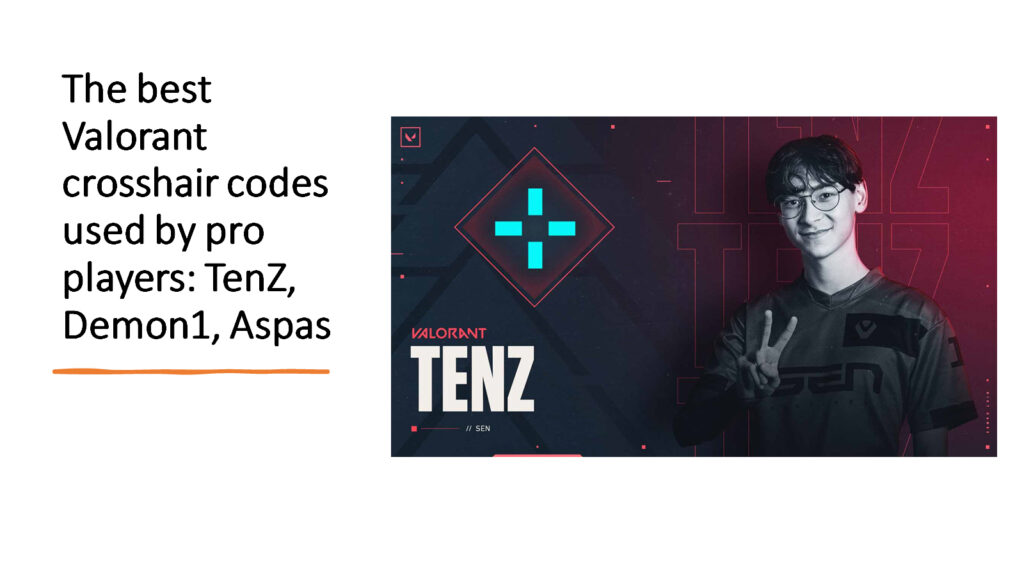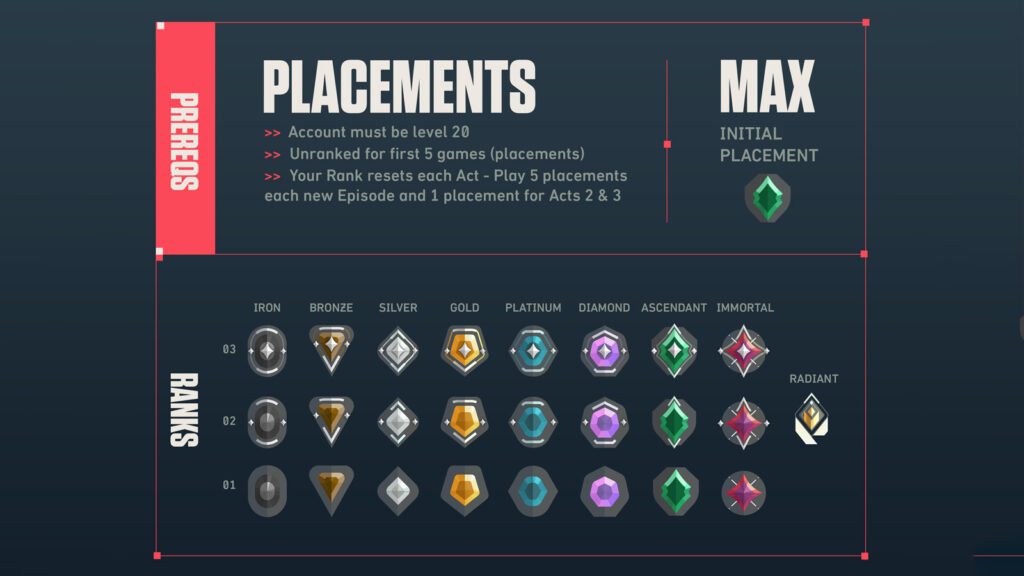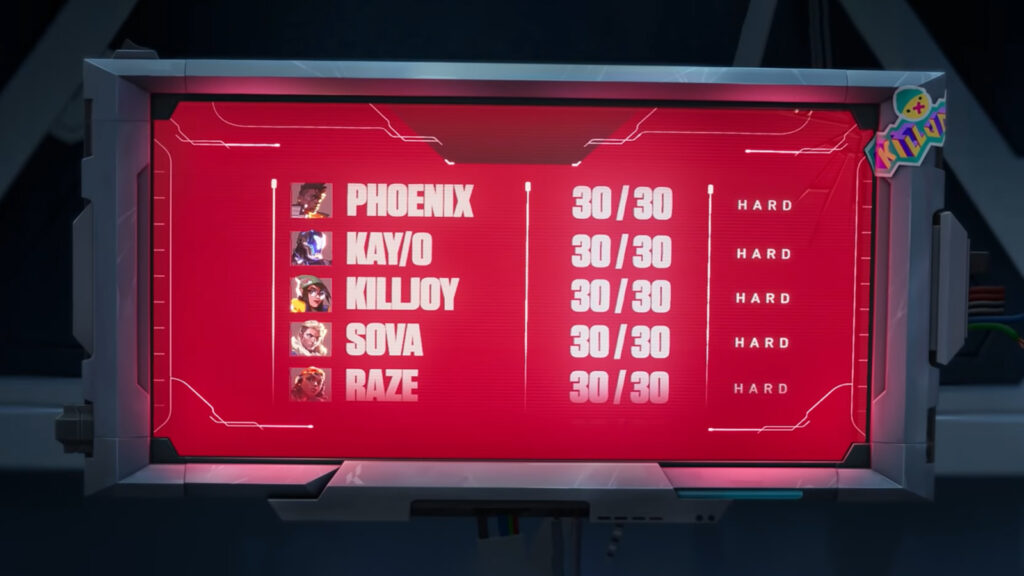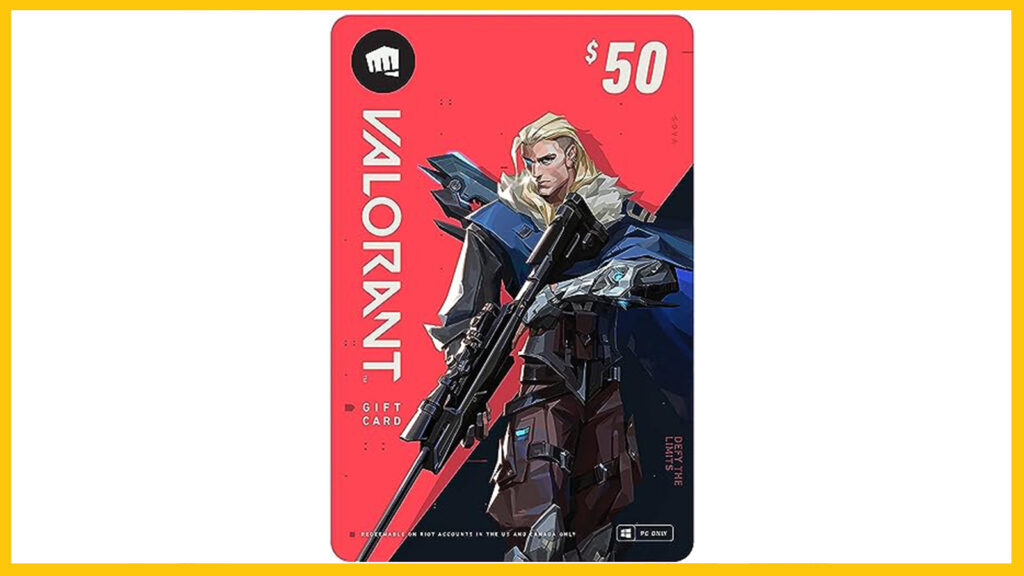Updated on May 9, 12:22 p.m. (GMT+8): Improved relevancy.
Players who want to test themselves and measure their skills and abilities can do so in Valorant’s competitive mode. Going up against other players in comp is the only way to secure a rank.
Valorant ranks reflect your aiming accuracy, tactical awareness, and ability to work collaboratively with your team.

The only way to climb the ranks hinges on victories — every win propelling ranks upwards through the competitive ladder.
At the time of writing, Valorant’s competitive landscape comprises nine unique ranks, with the first eight further divided into three tiers. To better understand how ranked works, we will provide a comprehensive overview of the mode’s competitive structure.
Valorant ranks in order from lowest to highest

In Valorant, it’s crucial to understand the distinction between Rank and Act Rank.
Rank serves as a precise indicator of your skill level and match rank. It is visible to your party, in the tab menu, and on the summary scoreboards.
On the other hand, Act Rank assesses your performance throughout an entire Act and is determined by your highest-ranked victory.

Here are the ranks in order of progression:
- Iron
- Bronze
- Silver
- Gold
- Platinum
- Diamond
- Ascendant
- Immortal
- Radiant
Each rank, except for Radiant, consists of three tiers.
The higher the tier number, the higher your rank. Ranks will influence a player’s Act Rank as you progress.
How to play Valorant ranked with your friends

Players have the option to queue up as a group, provided that there’s not a significant rank difference. Groups of two to three players can only join competitive matches within a designated rank range.
| LOWEST RANK IN A PARTY | HIGHEST RANK IN A PARTY |
| Iron and Bronze | Silver |
| Silver | Gold |
| Gold | Platinum |
| Platinum, Diamond, Ascendant, Immortal, and Radiant | Exactly 1 tier higher max (Example: Platinum 2 can queue with up to Diamond 2) |
Five-stack parties will not have any ranked restrictions. However, if a five-stack includes players ranging from Iron to Ascendant, they will incur penalties in their Rank Rating (RR).

For instance, a five-stack consisting of only Silver and Gold players won’t face RR penalties. But a five-stack with a mix of Silver, Gold, and Ascendant players will experience RR penalties.
It’s essential to note that Immortal 1 ranked players and above can only participate in solo, duos, or full five-stack queues.

GET YOURS TODAY: Valorant US$50 Gift Card |
Just a heads up, some of the links on ONE Esports are affiliate links. This means if you click on them and make a purchase, we may earn a small commission at no additional cost to you. It’s a way for us to keep the site running and provide you with valuable content. Thanks for your support!
READ MORE: Sunset Sova lineups every initiator main needs to know


